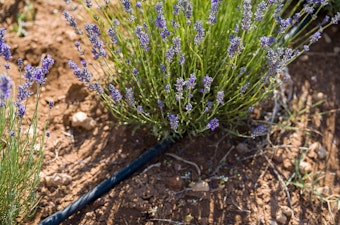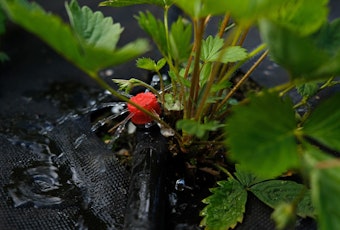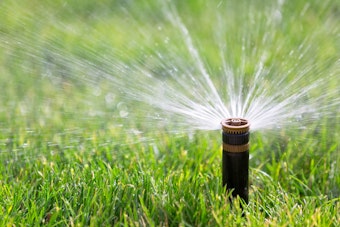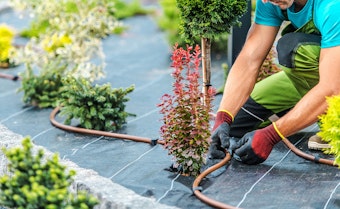 Be Inspired Blog - Arizona
Be Inspired Blog - Arizona

Advantages of Drip Irrigation Over Hand Watering: A Gardener's Guide
Efficient Garden and Landscape Watering Begins with The Right Irrigation Systems
In arid regions like Phoenix, Arizona, maintaining a lush and vibrant garden and landscape can be a challenging endeavor, especially during the scorching summer months. One of the most critical factors for success is ensuring proper watering throughout the year. In this blog, we'll explore the advantages of using a drip irrigation system compared to hand watering, especially in areas that experience extreme heat like the Valley of the Sun.
The Challenges of Watering in our Harsh Desert Heat
The extreme heat in the greater Phoenix Metropolitan Area presents unique challenges for gardeners and landscapers. Here are some of the difficulties you might encounter when trying to keep your plants hydrated:
- Evaporation: The intense heat causes water to evaporate rapidly from the soil's surface, making it difficult for plants to absorb enough moisture.
- Inconsistent watering: Hand watering can be inconsistent, leading to overwatering or underwatering, both of which can harm your plants—especially during hot summer months!
- Time-consuming: Hand watering a large garden or landscape can be time-consuming, especially when you need to do it frequently to combat the heat.
- Plant stress: Inconsistent moisture levels can stress plants, making them more susceptible to diseases and pests.
Drip Irrigation vs. Hand Watering
 Drip irrigation systems offer several advantages over hand watering, making them an excellent choice for maintaining your garden and landscape in extreme heat:
Drip irrigation systems offer several advantages over hand watering, making them an excellent choice for maintaining your garden and landscape in extreme heat:
- Efficiency: Drip systems deliver water directly to the base of each plant's roots, minimizing evaporation and ensuring that your plants receive the moisture they need.
- Consistency: Drip systems can be programmed to deliver a consistent amount of water over a set period, providing a stable and controlled environment for your plants.
- Time-saving: Once installed, drip systems require minimal maintenance and can be set on timers, saving you valuable time compared to hand watering.
- Reduced weed growth: Since drip irrigation targets the root zone of your plants, it reduces the moisture available to weeds, helping to keep them in check.
- Water conservation: Drip systems are highly water-efficient, reducing water wastage compared to traditional sprinklers or hand watering.
Drip Irrigation is Best for These Scenarios
Drip irrigation systems are often more efficient than hand watering or traditional sprinkler systems for several types of plants and garden situations. Here are some scenarios where drip systems are particularly advantageous:
-
 Vegetable Gardens: Drip systems deliver water directly to the base of each plant, which is ideal for vegetables. This method reduces water waste and prevents diseases that can be spread by water splashing on leaves.
Vegetable Gardens: Drip systems deliver water directly to the base of each plant, which is ideal for vegetables. This method reduces water waste and prevents diseases that can be spread by water splashing on leaves. -
Ornamental Flower Beds: Similar to vegetable gardens, ornamental plants benefit from the direct watering at their roots, minimizing water waste and leaf wetting.
-
Drought-Tolerant Landscapes: Drip irrigation is excellent for xeriscaping, drought-tolerant and low-water-use plants since it provides just enough water at the root zone where it's needed.
-
Container Gardens & Hanging Baskets: Drip systems can be adjusted to deliver the right amount of water to potted plants, which can dry out quickly.
-
Hedges and Shrubs: For long rows of plants like hedges and shrubs, drip systems can be laid out along the length, ensuring each plant gets adequate water.
-
Fruit Trees and Orchards: Drip irrigation allows for precise watering around the dripline of trees, which is ideal for deep root watering.
-
Sloped Areas: On slopes, traditional sprinklers can cause runoff and erosion. Drip systems deliver water slowly, allowing for better absorption and reducing these issues.
-
Areas with Water Restrictions: In regions with limited water resources, drip systems are efficient and help comply with water usage restrictions.
-
 Gardens with Mixed Plant Types: Since drip systems can be adjusted for individual plants, they're great for gardens with a variety of plants having different water needs.
Gardens with Mixed Plant Types: Since drip systems can be adjusted for individual plants, they're great for gardens with a variety of plants having different water needs. -
Greenhouses: In controlled environments like greenhouses, drip irrigation provides precise moisture control, which is essential for optimum plant growth.
Watering of Limited Turf Areas & Lawns
 Traditional sprinkler systems are ideal for lawns due to their ability to provide even coverage across large, open areas, ensuring uniform grass growth. They are relatively simple to install and maintain, offering flexibility to suit different lawn shapes and sizes. Additionally, sprinklers can have a cooling effect on grass, particularly beneficial in hot climates. When used correctly, they promote deep root growth by thoroughly soaking the soil, which is crucial for the lawn's long-term health. However, it's important to use these systems efficiently to prevent overwatering and minimize water wastage, such as by watering during cooler times of the day and using timers or smart controllers.
Traditional sprinkler systems are ideal for lawns due to their ability to provide even coverage across large, open areas, ensuring uniform grass growth. They are relatively simple to install and maintain, offering flexibility to suit different lawn shapes and sizes. Additionally, sprinklers can have a cooling effect on grass, particularly beneficial in hot climates. When used correctly, they promote deep root growth by thoroughly soaking the soil, which is crucial for the lawn's long-term health. However, it's important to use these systems efficiently to prevent overwatering and minimize water wastage, such as by watering during cooler times of the day and using timers or smart controllers.
Drip systems are generally better for situations where targeted, efficient water use is needed, particularly in gardens with diverse plant types, in areas with water scarcity, or where disease prevention is a priority.
Installing a Drip System
 Here are the steps to install a drip irrigation system for your garden and landscape in Phoenix:
Here are the steps to install a drip irrigation system for your garden and landscape in Phoenix:
- Plan your system: Determine the layout of your garden and the water needs of different plants. Map out where you'll place the drip lines and emitters.
- Gather your materials: Purchase the necessary components, including tubing, emitters, filters, connectors, and a timer.
- Install the mainline: Lay out the mainline tubing along the perimeter of your garden. Connect it to your outdoor water source, such as a hose bib.
- Lay out the drip lines: Extend the drip lines from the mainline to your plants, ensuring that they reach the root zones. Use stakes or holders to secure the lines in place.
- Install emitters: Attach drip emitters or soaker hoses to the drip lines near each plant. Make sure the emitters are positioned to water the root zone directly.
- Add a timer: Install a timer on your outdoor water source to automate the watering schedule. Set the timer to run during the early morning or late evening to minimize evaporation.
- Monitor and adjust: Regularly check your drip system to ensure it's working correctly. Adjust the watering schedule as needed based on weather conditions and plant requirements.
In climates that have excessive heat like Phoenix, maintaining a thriving garden and landscape is possible with the right watering strategy. Drip irrigation systems offer efficiency, consistency, and water conservation benefits that make them the ideal choice over hand-watering. By installing a drip system and following the steps outlined above, you can ensure that your plants receive the moisture they need to thrive, even in the hottest of summers.
Say goodbye to the hassles of hand watering and hello to a flourishing garden and landscape!

